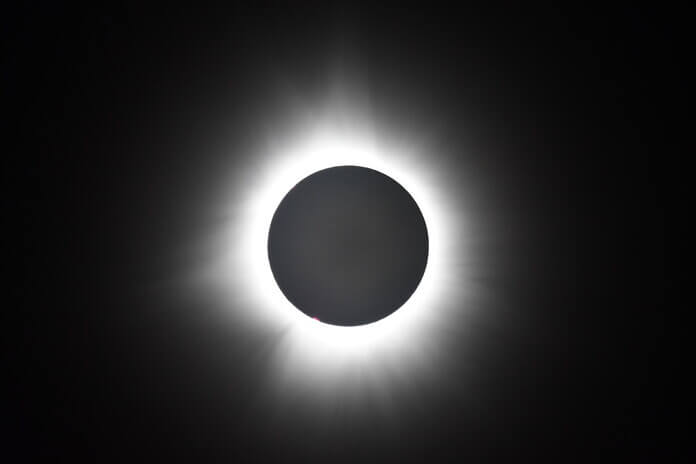Unveiling the Mystique: Solar Eclipses and Their Celestial Dance
Solar eclipses, those rare and awe-inspiring events where the moon briefly obscures the sun, have captivated humanity for millennia. These celestial displays, marked by their dramatic interplay of light and shadow, evoke a sense of wonder and awe that transcends cultures and epochs. As we delve into the science behind these phenomena and anticipate their upcoming occurrences, we uncover a tapestry of cosmic beauty and scientific discovery.
The Mechanics of a Solar Eclipse: A Dance of Celestial Bodies
At its core, a solar eclipse is a celestial alignment involving the sun, the moon, and the Earth. Despite the vast differences in size between these heavenly bodies, from our vantage point on Earth, they appear remarkably similar in size due to an extraordinary coincidence: the sun’s diameter is approximately 400 times larger than that of the moon, but it is also approximately 400 times farther away. This fortuitous ratio results in the moon appearing just large enough in the sky to completely cover the sun during a total solar eclipse.
Solar eclipses occur in three distinct types: total, partial, and annular. During a total solar eclipse, the moon fully obscures the sun, plunging the surrounding area into darkness and revealing the sun’s corona, the outer atmosphere, in a breathtaking display. Partial eclipses occur when only a portion of the sun is covered by the moon, resulting in a crescent-shaped sun. Annular eclipses, on the other hand, transpire when the moon is at a further point in its orbit, and its apparent size is smaller than that of the sun, leaving a ring of sunlight visible around the edges of the moon.
The Upcoming Solar Eclipse: A Date with Celestial Majesty
For skygazers in North America, the next solar eclipse promises to be an event of extraordinary significance. On April 8, 2024, a total solar eclipse will sweep across vast swathes of the continent, offering observers a rare opportunity to witness the sun’s temporary disappearance.
The path of totality—the narrow corridor where the sun will be completely obscured by the moon—will stretch from the Pacific Northwest to the Northeastern United States, encompassing regions such as Mexico, the central United States, and eastern Canada. Major cities including Dallas, Indianapolis, Cleveland, and Buffalo will find themselves within the path, providing millions of individuals with a front-row seat to this celestial spectacle.
Preparing for the Eclipse: Safety and Spectacle
While witnessing a solar eclipse is undeniably captivating, it is crucial to do so safely. Staring directly at the sun, even during an eclipse, can cause permanent eye damage. Therefore, special precautions such as solar viewing glasses or solar filters for telescopes and cameras are essential to safeguard one’s vision.
Moreover, experiencing a solar eclipse goes beyond mere observation; it is an opportunity to engage with the natural world and contemplate humanity’s place in the cosmos. Whether attending organized viewing events, conducting scientific experiments, or simply marveling at the spectacle with friends and family, the eclipse fosters a sense of unity and wonder that transcends boundaries.
Conclusion: A Celestial Symphony
As we await the upcoming solar eclipse, let us embrace the sense of wonder and curiosity that these cosmic events inspire. From the ancient civilizations who viewed eclipses with a mixture of fear and reverence to the modern-day scientists who study them with precision and rigor, solar eclipses continue to captivate and inspire humanity.
So mark your calendars, gather your viewing gear, and prepare to witness the celestial dance of the sun and the moon—a spectacle that reminds us of the grandeur and interconnectedness of the universe. The next solar eclipse beckons, promising an experience that is both humbling and exhilarating—a fleeting moment when the mundane gives way to the sublime.
This article blends scientific explanation with anticipation for the upcoming solar eclipse, emphasizing both the wonder of celestial phenomena and the importance of safety when observing them. If you need further details or modifications, feel free to ask!







